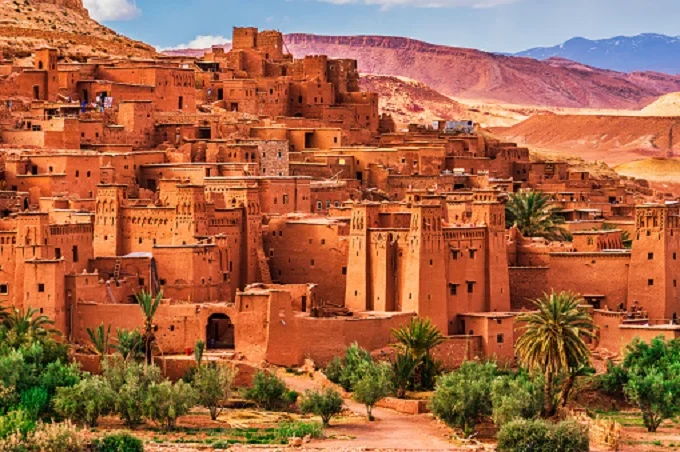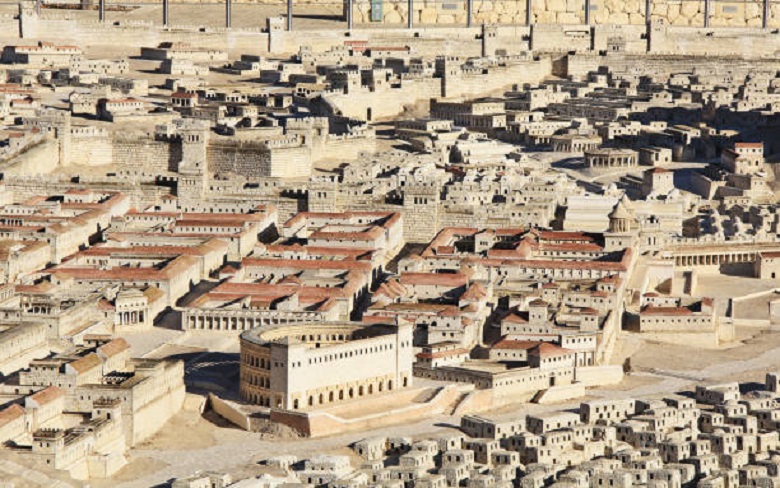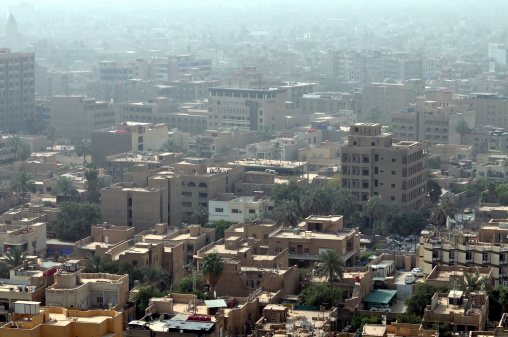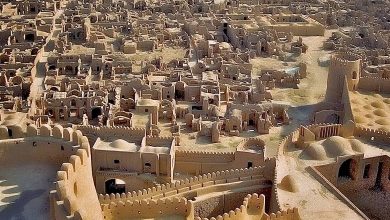7 cities that were once the capitals of the world but fell into disrepair

London, Paris, and New York are all well-known cities today. These are the new global capitals, where people from all around the world congregate. They used to be little communities with no one caring about them.
Thousands of years ago, the world’s capitals were megacities in Asia, Africa, and the Middle East, not European or American cities. Some flourished in commerce, while others were powerful religious centers, while others drew academics from throughout the world. Their era has passed, and now these cities have either vanished from the face of the Earth or bear little resemblance to what they were many years ago.
Tenochtitlan
Tenochtitlan, the Aztec city-state situated on the location of modern-day Mexico City, was created relatively recently – in 1325 – by historical standards. The metropolis covered more than 1.3 thousand hectares and had more than 200 thousand people in the 15th century.

There were two great 30-meter-high temples in the city’s center and numerous other distinct structures. At the same time, the Aztecs themselves lived in modest dwellings that separated the city into various parts. Aqueducts provided water to the city’s residents, and agriculture was well-developed. Tenochtitlan was also the Aztecs’ trade metropolis, with thousands of people flocking to exchange products.
The Spanish conquistadors headed by Hernan Cortes created the foundations for the magnificent metropolis. The city’s riches astounded the Spaniards, who determined to capture it by force. The conquistadors assassinated the Aztec monarch Montezuma II and destroyed the metropolis on August 13, 1521, and a new one developed in its place: Mexico City.
Jericho

Jericho is one of the world’s oldest cities still inhabited today. However, it is now home to slightly over 20,000 people. And Jericho was once one of the world’s most important cities, flourishing from 1700 to 1550 BC. As the city became larger, aristocracy started to reside there. The fact that Two walls encompass Jericho demonstrates its richness.
Jericho was destroyed by a natural calamity, unlike many other ancient cities that fell into disrepair. There was either an earthquake or a meteorite about 1550 BC. Furthermore, experts are still divided on whether it was a stone meteorite or ice. In any event, if a meteorite destroyed the city, it had a capacity of at least 10 megatons, as projected.
Babylon
Various people, even those who are not familiar with history, are aware of the ancient city of Babylon as a result of its reference in many scriptures. It was built in 1894 BC in Iraq land and grew into one of the most significant communities under Hammurabi’s leadership, producing one of the earliest legal codes. The state fell apart after Hammurabi’s death, and it lingered in the shadow of its previous glory for many years. King Nebuchadnezzar II later reconstructed it. During his reign, Babylon reached its pinnacle of dominance in the 6th century BC, prosperous both economically and culturally.
Around 150 thousand people lived in the city at the time, and they were varied in terms of nationality and cultural and religious beliefs. There was even a sense of equality between men and women in Babylon, where tolerance for differing ideas was observed.
The city, however, fell into disarray following Nebuchadnezzar II’s death. It was seized by Cyrus II’s army in 539 and became part of the Achaemenid empire. It flourished shortly again in the 4th century BC, becoming the capital of the Macedonian Empire. The city after that passed from one hand to the next, and by the third century BC, it had fallen into ruin.
The Arabs conquered Mesopotamia in the middle of the seventh century, and Babylon, although maintaining the administrative headquarters of the province of Babylon, progressively lost its power. Around the 10th century AD, the city was destroyed.
Timbuktu

Around 1100, the Taureg established Timbuktu as a caravan stopover. The parking lot rapidly extended into the city. By the 14th century, it had become a major commerce hub, with gold, ivory, slaves, and other products being brought to the Mediterranean Sea from there. Arab scientists and cultural workers started to flock to the city once it became prosperous. After Timbuktu’s incorporation into the Songhai empire, Askia Muhammed I reigned supreme after a brief period of decline. The city’s golden era lasted until the end of the 16th century.
The Moroccan Sultan’s army took Timbuktu in 1591, and the people were largely slaughtered and partially enslaved. The nomadic Berbers followed the Moroccan invaders, who finished what they had started and destroyed the city. Timbuktu is now a tiny town with a population of little more than 35,000 people.
Carthage
Carthage was established in 814 BC and became the capital of the Carthaginian kingdom, which ruled much of the southwestern Mediterranean for centuries. At the time, the city was the center of military supremacy and a great fleet and a prosperous commerce hub, with all maritime routes leading to it. Carthage had a population of up to 1 million people during the height of its dominance.
Carthage conquered additional areas with ease until it ran with Roman opposition. Carthage escaped the first Punic War virtually unscathed, and the city itself was unharmed. However, the Second Punic War brought him to his knees, and the once-great city was looted and destroyed to the ground during the third. It was afterward reconstructed and became the Roman Empire’s most significant outpost in Africa, where people of science and art aspired.
The city went from one hand to the next following the Arab invasion, and it was looted and destroyed multiple times before being rebuilt and destroyed once again. In the 13th century AD, the city was eventually destroyed.
Uruk

Uruk is the earliest Sumerian and Babylonian city-state in Southern Mesopotamia, built in the fourth millennium BC. It was the region’s greatest city, the administrative headquarters, and the focus of commerce between 4100 and 3000 BC. Uruk is also said to be one of the first towns to establish a writing system called cuneiform, which comprised markings made on red clay using reeds. Uruk was also where the goddess Inanna and the deity Anu were worshipped.
Uruk was continuously inhabited from its inception until about 300 AD when it began to deteriorate due to the influx of new megacities. It was demolished by the Sassanids in the third century AD, although it was still inhabited until 430 when it vanished. Uruk was first rediscovered in the nineteenth century.
Baghdad

Baghdad is still standing today, but it is simply a ghost of its former glory. On the direction of the Caliph Abu Jafar al-Mansur, this city was established in 762 as the new capital of the Abbasid Empire. The state spanned enormous swaths of the area from North Africa to Afghanistan, and it was in the midst of its golden period at the time.
In the Middle Ages, Baghdad became a symbol of the Arab world’s glory, attracting the brightest minds of the period, including scientists, philosophers, and authors. There were around 30 libraries here and the famed House of Wisdom.
Nothing, however, can endure indefinitely. The Abbasid kingdom was no longer the formidable military machine in the eighth century. By the middle of the thirteenth century, it could no longer fight on an equal footing with adversaries. In 1258, a massive Mongol army led by Khan Hulagu marched up to the city walls of Baghdad, laid siege to the city, and ordered the Caliph to surrender, but he refused. Then came a brutal struggle; consequently, Baghdad fell 10 days later, and the Mongol army started plundering the city. The residents were either slain or enslaved, and the structures were demolished. Thousands of precious manuscripts were destroyed due to the destruction of the city.
Like many others conquered by the Mongols, the city was not forgotten, although it took hundreds of years to rebuild.




